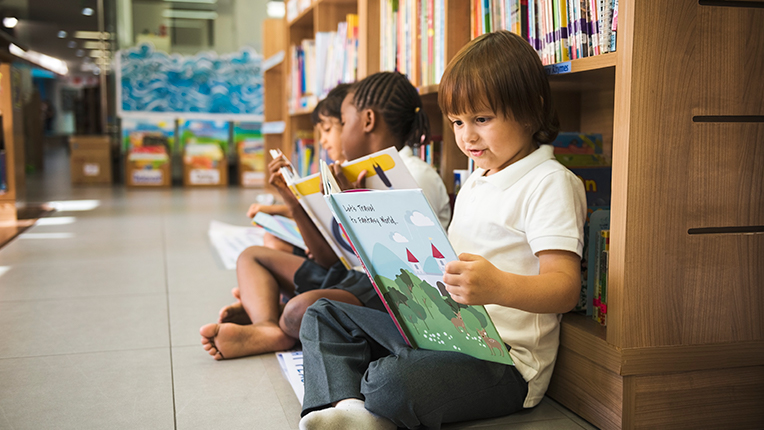Origin of the illustrations
Illustrations in books date back to ancient times, and their evolution throughout history have been influenced by various cultural, technological, and artistic factors. Below is a brief chronology of the origin of the illustrations in books:
- Illuminated manuscripts (6th to 16th centuries): In the Middle Ages, manuscripts, especially religious ones, were decorated with detailed, hand-crafted illustrations, known as “illuminations.” These illustrations were used to enhance the content and facilitate understanding of the texts.
- Invention of the printing press (15th century): The invention of the printing press by Johannes Gutenberg in the 15th century marked a milestone in the history of book production. Although initially used primarily to print text, as technology advanced, printed illustrations became possible. Wood engravings and, later, woodcut and intaglio made it possible to include images in books more efficiently.
- 17th century: During this period, the inclusion of engravings and copper engravings in books became popular, allowing for greater precision in illustrations. This was especially important in books on anatomy, botany, and natural sciences.
- 19th century: The Industrial Revolution and advances in printing led to a greater spread of illustrations in books. Lithography became a common technique for producing color images.
- 20th century: With the improvement of printing technologies, such as photogravure and offset printing, it became possible to include photographs in books, revolutionizing the way visual information was presented.
- Digital Age: Today, with the proliferation of digital technology, illustrations in books can be created and distributed more accessible than ever. E-books and online publications allow for the inclusion of high-quality images in versatile ways.
In short, illustrations in storybooks have evolved from medieval manuscript illuminations to contemporary digital images. Throughout history, illustrations have played an important role in improving the understanding and visual appeal of books, and remain an integral part of literature and education.
Illustrations in children’s storybooks
Illustrations in children’s storybooks are key elements that enrich the reading experience. Throughout history, these images have evolved and served multiple key functions. First of all, illustrations attract children’s visual attention, even before they can read, thanks to their color and appeal. This creates an engaging entry point for children to explore the book.
In addition, the illustrations are essential for understanding the plot, characters, and places in the story. They can clarify abstract concepts, sequences of events, and the emotions of characters, thus making the text easier to understand. They also stimulate children’s imagination by visually representing imaginary worlds and characters. This visualization allows them to connect emotionally with the story and develop their storytelling and creativity skills.
In terms of literacy, illustrations can be a powerful tool for children who cannot yet read. They help younger children associate words with images, which is crucial in the early reading learning process. Additionally, they make books visually appealing, which increases children’s interest in reading.
Historically, illustrations in children’s stories have varied in artistic style, from John Tenniel’s classic drawings in “Alice in Wonderland” to more modern and contemporary styles. With the arrival of technology, illustrations have also adapted to new forms of digital reading, incorporating interactive elements and animations to further enrich the reading experience.
Illustrations in storybooks are essential elements, as they enrich the reading experience, facilitate understanding, encourage imagination, promote early literacy, and make books visually attractive. Children’s book illustrators play fundamental role in creating works that leave a lasting impression on the minds of young readers.
Personalized illustrations in storybooks
Personalized illustrations in storybooks are key elements that contribute significantly to the unique and emotional experience these books offer. Let’s learn about the characteristics and the importance of personalized illustrations in storybooks:
- Personalization: The most distinctive feature of personalized stories is that they are adapted to a specific child. This includes the ability to include the child’s picture and name in the book. Personalized illustrations allow the child to see themselves in the story, which can increase their emotional connection to the book.
- Inclusivity: Custom illustrations can be especially valuable in representing diversity. They can reflect not only the child’s appearance, but also her cultural and family environment, promoting a sense of inclusion and belonging.
- Integral part of the narrative: The illustrations in personalized stories are not mere decorations, but are integrated into the narrative. The story is often adapted to include the child in situations related to the illustrations, making the experience even more immersive.
- Visual stimulation: Personalized images attract the child’s attention and keep them engaged in reading. The combination of text and custom illustrations creates a visually engaging and enjoyable reading experience.
- Lasting memories: Personalized books with exclusive illustrations can become lifelong treasures. Children often keep these books as special memories of their childhood.
- Learning and development: Personalized illustrations can also be used to teach specific educational concepts in a playful and personalized way, facilitating the child’s learning and development.
The illustrations in Materlu’s personalized stories
The quality of the digital illustrations in Materlu’s personalized storybooks is exceptionally important. Materlu is a platform that specializes in creating personalized books for children, and digital illustrations are the backbone of this unique experience. These illustrations should be sharp, colorful, high-resolution, and aesthetically pleasing to capture children’s attention and imagination. By customizing characters based on their appearance, you increase your child’s engagement with the book. The quality of the digital illustrations enhances the immersion and emotional impact of the personalized stories.
Go to the Materlu website and discover the large selection of personalized storybooks with their wonderful illustrations.
